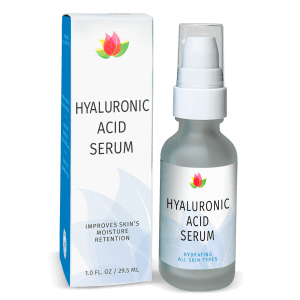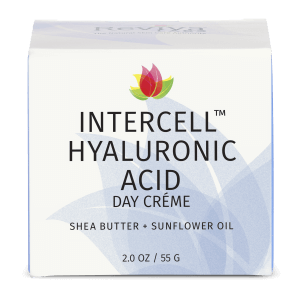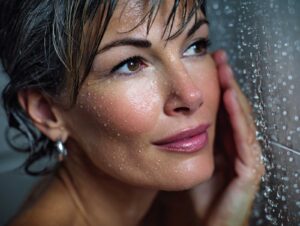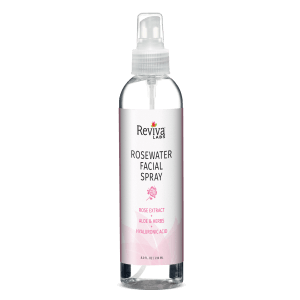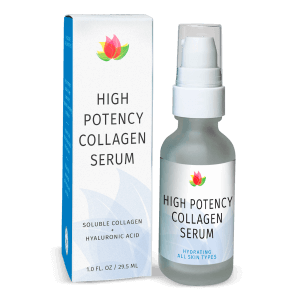Clean Beauty, Natural, Reviva Labs, Skin Care
Why Moisture Loss Happens Even If You Drink Water
Early in my career I sat through a lecture where the speaker flashed a startling figure across the screen: more than seventy-five percent of American adults show at least one clinical marker of chronic dehydration. I remember the collective gasp in the room because everyone knew they had downed several glasses of water that day, yet the data refused to budge. That statistic still echoes whenever a client tells me, “I drink eight cups a day, so my skin must be hydrated.” Real-world evidence says otherwise, prompting a deeper look at the invisible forces that rob the body – and especially the skin – of water long after the bottle is empty. My goal here is to walk you through those forces, reveal why your complexion can feel parched while your tumbler sits empty again, and share practical moves that tip the equation back in your favor.
The first thing to grasp is that hydration never operates in a straight line. Water that travels from lips to stomach does not teleport straight into skin cells. It joins a constantly moving pool that nourishes organs with higher priority than your cheeks. Kidneys refine, blood circulates, lungs exhale vapor, and one very busy organ – your skin – releases a quiet stream of moisture into the air. That release is called transepidermal water loss, and scientists measure it in grams of water escaping per square meter of skin each hour. They find typical rates hover around five to eight grams, a trickle so small we never see it yet large enough to total roughly three hundred milliliters by bedtime. In other words, your body pours out more than a cup of water daily through pores even when you never break a sweat.
Those numbers reveal why a tall glass cannot single-handedly guarantee supple skin. Picture a leaky bucket under a faucet. You can run the tap all day, but if the holes stay open the water level never rises. Skin behaves in exactly that fashion. It must retain moisture to look dewy, and retention hinges on elements both inside and outside the body. Drink less than you lose and every cell feels the pinch; drink enough yet let the leaks continue, and the surface will still appear dull and papery. That paradox explains why avid gym goers, office workers, and even professional swimmers often report tightness after cleansing: they hydrate generously and still witness flakes because the leaks win.
The Skin’s Moisture Equation
Skin functions as a living barrier. Its outermost stratum corneum resembles a brick wall in which flattened cells serve as bricks and lipids provide mortar. When that mortar breaks down, tiny passages form, and water vapor slips through. Age plays a role by thinning lipid content, but so does daily routine. Harsh cleansers strip away protective oils faster than the body can replace them. Frequent hot showers dissolve ceramides, those waxy molecules that normally seal gaps. Even diligent mask wearers may weaken the barrier if the wrong fabric rubs facial contours for hours. Once the mortar crumbles, the exit doors swing wide, and your diligently sipped water leaves the building.
Surprisingly, your internal chemistry can accelerate loss as well. Diets low in essential fatty acids compromise lipid synthesis. Cortisol, the stress hormone, interferes with skin repair by redirecting nutrients toward your fight-or-flight systems. Some medications reduce natural sebum output, again depriving the wall of key mortar. These inside factors quietly lower the threshold at which skin starts leaking, meaning moisture can vanish overnight without any obvious trigger.
Reviva Labs' Simple Hyaluronic Acid Routine
Transepidermal Water Loss Steals Hydration
Dermatology labs quantify transepidermal water loss, or TEWL, with small instruments pressed against the skin. Readings vary by individual, yet scholars routinely record averages near 4.6 grams per square meter per hour on healthy adult forearms. Multiply that modest figure by twenty-four hours and by the skin’s average surface area and you discover a steady stream approaching a cup of water each day. This passive evaporation carries no cooling benefit the way sweat does; instead, it is simply the price of having a living barrier that breathes. Elevate TEWL just a few grams – something as trivial as a chilly gust can manage – and the daily deficit climbs fast.
Humidity magnifies the challenge. Winter heating often drives indoor levels below twenty-five percent, turning living rooms into mild desiccators. Under such dry conditions the gradient between moist skin and arid air widens, and vapor migrates outward with gusto. People notice static shocks, brittle nails, and cracking lips but may not connect those signs to the persistent tug removing fluid from their cells minute by minute. The situation worsens in high altitude regions where thin air holds scant moisture year-round, yet travelers seldom pack extra barrier aids because they trust drinking fountains to offset the climate.

Lifestyle Habits That Push Moisture Away
Many everyday choices escalate loss without our realizing it. Long aerobic sessions in air-conditioned gyms pull sweat rapidly off the surface, leaving salt behind that can sap barrier lipids. Post-workout showers taken extra hot dissolve the fresh oils skin had started to secrete for defense. Fragranced detergents linger on pillowcases and can provoke mild irritation that further degrades the mortar, even while sleepers dream of clear complexions. Add in late-night snacks heavy in sodium and alcohol, each encouraging diuresis, and you awaken to find the bucket half empty before sunrise.
Screen time contributes in a less obvious way. Hours spent focusing on bright monitors reduce blink rate, which dries the delicate eye area. That microenvironment cues users to rub or cleanse more often, compounding disruption of the local lipid veil. Gaming marathons also encourage caffeinated beverages that stimulate kidneys into accelerated output, shunting water away from skin in favor of bladder breaks. If all of that sounds familiar, understand you are not alone; modern life conspires against epidermal reservoirs on several fronts, yet each point of attack has an antidote.
The Role of Climate and Environment
Step outside and the elements join the conflict. Ultraviolet radiation thins the stratum corneum after repeated exposure, slicing mortar with microscopic knives. Wind physically shears perspiration and sebum off the surface, leaving vulnerable gaps behind. Environmental pollutants such as ozone react with skin lipids, oxidizing them into less effective forms and sometimes triggering inflammation that widens cellular junctions. Urban commuters might feel sweaty under summer sun, but the moisture they feel is largely eccrine sweat, not deep cellular hydration. Once that sweat dries, TEWL continues at an elevated rate if the barrier remains compromised.
Even household environments can sabotage the bucket. Forced-air heating strips humidity while circulating dust that abrades epidermis. Popular scented candles release volatile compounds able to irritate sensitive users. Hard water rich in calcium and magnesium leaves alkaline residue after bathing, raising skin pH and disrupting natural acid mantle function. The result is yet another microscopic breach through which moisture seeps.
Nutrition and Hydration Beyond the Glass
The drinking glass is just the opening act. Effective internal hydration depends on electrolytes, primarily sodium, potassium, and magnesium. They help direct water into and out of cells. Downing liters of plain water without replenishing salts can dilute plasma and trigger kidneys to flush the excess, ironically reducing net hydration. Meals laden with produce, seeds, and legumes offer both fluids and minerals in balanced packages. Omega-3 fatty acids from flax or salmon feed the lipid mortar, strengthening retention. Vitamin C assists ceramide production while supporting collagen that secures water within the dermis. When diets fall short on these cofactors, skin struggles to transform drunk water into stored moisture.
Gut health also exerts influence. An imbalanced microbiome may spark systemic inflammation, subtly taxing skin’s repair machinery. Poor digestion hinders absorption of water-soluble nutrients vital for barrier synthesis. Individuals reporting perpetual thirst despite heavy intake sometimes find relief after addressing chronic digestive issues that once blocked proper utilization.
Smart Topical Strategies
If internal steps keep the bucket filled, topical care patches the holes. The most direct tactic is occlusion: ingredients such as squalane, shea butter, or natural waxes sit atop skin forming semi-permeable films that slow evaporation. Humectants like glycerin and hyaluronic acid capture ambient moisture and draw it inward, but they perform best when sealed with a light emollient. I often suggest a hyaluronic serum, for instance the very straightforward Hydrating Serum from Reviva Labs, beneath a lipid-rich cream to lock gains in place. Using that layering approach morning and night can slash TEWL substantially within a week.
Cleansing deserves equal attention. Mild, pH-balanced formulas preserve acids that fend off harmful microbes and maintain proper enzyme activity responsible for barrier renewal. Over-exfoliation, whether by strong acids or aggressive scrubs, delivers a temporary glow yet opens leaks if practiced too frequently. Instead consider gentle removal of surface debris once or twice weekly, followed by replenishing masks imbued with plant oils and ceramide precursors. Barrier-first thinking shifts priorities from extreme polish to resilient comfort.
Sun protection indirectly guards moisture too. Ultraviolet damage thins the stratum corneum over time; daily use of broad-spectrum SPF curtails that thinning, giving you more mortar to keep water where it belongs. Even short winter walks warrant sunscreen because UVA rays penetrate glass and clouds. When paired with antioxidants such as vitamin E or green tea extract, sunscreen becomes a moisture ally as well as a photoaging shield.

Putting It All Together
Water intake remains foundational – nobody thrives while parched – but the road from gulp to glow involves waypoints inside and outside the body. Skin loses hundreds of milliliters each day through normal biology, and life’s frictions can double that tally. Replenishment must therefore be two-pronged: internal balance through minerals, healthy fats, and steady sipping, plus external defense via gentle care, smart occlusion, and environmental control. A humidifier that keeps rooms near forty-five percent relative humidity transforms winter from drying gauntlet to comfortable nest. A diet sprinkled with avocados, pumpkin seeds, and citrus arms cells with tools they need to build tighter junctions. Thoughtful product layering fills microscopic cracks and halts unnecessary escape.
When these moves align, a delightful shift occurs. The cooling breeze that once left cheeks crepey now feels refreshing, not harmful. Previously persistent flaking fades, replaced by a soft reflectivity that no cosmetic highlighter can fake. Most satisfying of all, that water bottle finally pays visible dividends because the skin has become a willing reservoir rather than a leaky vessel. I have watched clients reach this turning point many times, and each success underscores the same lesson: hydration is a system, not a sip. Master the system and every drop you drink finds a home beneath the surface, letting radiance emerge day after day.

